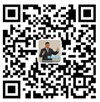Along with the increasing popularity of social media in marketing and our daily life, new social media terminologies are popping up like mushrooms after a rain. It makes you feel outdated if you don’t know the widely used social media terms. As a small business owner or entrepreneur, it is essential to understand the social media terminologies used by digital marketing professionals so that you can better communicate with your social media marketing service provider.
From my past experience in digital marketing training and services, I have handpicked 21 social media terminologies you should know.
21 Essential Social Media Terminologies
- Clickthrough rate (CTR)The number of people, who viewed a message or piece of content, clicked on the ad or link in an email marketing campaign. The actual metric is calculated by comparing the number of clicks to impressions. For example, if 100 people saw your ad in Facebook and one person clicked on the ad, your click-through-rate is 1.0%.
- Content curation
It is the process of sifting through the web to find the best and most relevant content for an audience and then presenting it to them in a meaningful way. It is about creating value for your audience by saving them time and effort. Organizing related content into pinboards, newsletters, or weekly blog posts can help you build a regular audience and also demonstrate your subject expertise. - Engagement
Social media engagement refers to the acts of talking to, messaging or otherwise interacting with other people on social networks. This broad term encompasses several different types of actions on social media, from commenting on Facebook posts to participating in Twitter chats. At its simplest, social media engagement is any interaction you have with other users. - Engagement rate
Engagement rate is the percentage of people who saw your social media post and actively engaged with it by clicking the link, replying, liking, favoring, sharing, and retweeting, etc. Engagement rate is a valuable metric to help determine the quality and success of your social media messaging. It provides an indicator of how interesting or useful the message was to your audience. Twitter Analytics provides in-depth engagement rate data for every Tweet you send. - Facebook Reach
The number of unique people who have seen content from your Facebook Page. Reach is not the same as impressions, which is the total number of times your content is viewed (including multiple views from the same user). Facebook provides two different reach metrics: total reach and post reach.- Total reach is the number of unique people who have seen any content associated with your Page during the last 7 days. This includes people who view your Page posts, people who visit your Page after searching for it, and people who see ads that are associated with your Page.
- Post reach is the number of unique people who have seen a particular Facebook Page post in their News Feed.
- Handle
Handle is the term used to describe someone’s @username on Twitter. For example, my Twitter handle is @marywangseo. - Hashtag
The hashtag is a word or phrase preceded by the “#” sign (for example, #SocialMedia). It is a simple way to organize the topics of social media messages and make them searchable. On most social networks, clicking a hashtag will reveal all the public and recently published messages containing that hashtag. Hashtags are now used on almost every other social media platform, including Facebook, Google+, Instagram, Vine and Pinterest. - Influencer
An influencer is a social media user who can reach a significant audience and drive awareness about a trend, topic, company, or product. From a marketer’s perspective, the ideal influencer is also a passionate brand advocate. However, influencers often try to remain impartial toward brands in order to maintain credibility with their hard-earned audiences. - Geotag
A geotag is the directional coordinates that can be attached to a piece of content online. For example, Instagram users often use geotagging to highlight the location in which their photo was taken. - Klout Score
A measure of social influence ranging from 1 to 100. Klout rates a social media user based on the size of their social networks and how other users interact with their content. The company defines influence as “the ability to drive action” and measures hundreds of signals from Twitter, Facebook, Google+, LinkedIn, Instagram, Youtube, etc. You can increase your Klout score by connecting multiple platforms to your Klout profile. - LinkedIn endorsement
A LinkedIn member’s recognition of another person’s skill listed on his or her profile, such as Content Marketing, Web Programming, or Social Media. Endorsements boost your credibility on LinkedIn by indicating that you actually have the skills you say you have. You can only endorse the skills of your first-degree connections. - LinkedIn Recommendation
It is a term used to describe a written note from another LinkedIn member that aims to reinforce the user’s professional credibility or expertise. - Periscope
Periscope is a social video app that allows users to broadcast live video from wherever they are. App users also have the ability to engage with others videos, browse live or recent broadcasts, and follow users to receive notifications. - Reach
Reach is a data metric that determines the potential size of audience any given message could reach. It does not mean that the entire audience will see your social media post, but rather tells you the maximum amount of people your post could potentially reach. Reach is determined by a fairly complex calculation including the number of followers, shares and impressions as well as net follower increase over time. Reach should not be confused with Impressions or Engagement. - Retweet
A retweet is when someone on Twitter sees your message and decides to re-share it with his or her followers. A retweet button allows them to quickly resend the message with attribution to the original sharer’s name. - Retargeting
It is an online advertising technique that involves targeting web visitors or people from the contact lists. This is accomplished by placing a small tracking tag on your website. Once visitors come to your website, you can then target them as they visit other websites including Facebook, news sites, blogs, or other online media. - RSS
It is a format for syndicating web content. Bloggers, news publishers, and other content creators use RSS feeds to effectively broadcast content (or content summaries) to audiences. Readers can subscribe to RSS feeds without providing personal information, and then automatically receive updates through a news reader or aggregator. - Social media listening
The process of finding and assessing what is being said about a company, topic, brand, or person on social media channels. - Social Media Monitoring
Social media monitoring is a process of monitoring and responding to mentions related to a business that occur in social media. - Tag
A keyword added to a social media post with the original purpose of categorizing related content. A tag can also refer to the act of tagging someone in a post, which creates a link to their social media profile and associates them with the content. - Trending Topic
Trending topics refer to the most talked about topics and hashtags on a social media network. These commonly appear on networks like Twitter and Facebook and serve as clickable links in which users can either click through to join the conversation or simply browse the related content.





